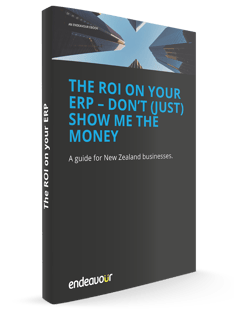How to estimate the ROI on your ERP investment: A guide for New Zealand businesses
The return on investment for your ERP isn't just about dollar gains - it's also about intangible factors that are often overlooked when estimating a budget.
Evaluating the ROI is a fundamental step to undertake before implementing an ERP system. Business owners, managers, CFOs need the ERP project team to justify the budget they've been allocated. They want to see what the ROI will be.
We've prepared this guide to help New Zealand businesses understand the tangible, quantitative aspects of ROI for ERP as well as the often-overlooked factors.
The guide will help you understand:

- The basics of calculating ROI
- The main driver of the decision and the potential to be realised after implementation.
- The various aspects of an ERP implementation - the quantifiable, the tangible and the intangible
- Applying your ROI calculation to the real world
Fill out the form to download your copy of the eBook.